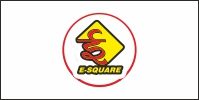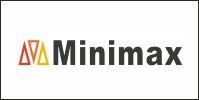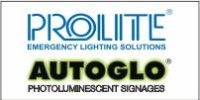 The integration of advanced propulsion systems like the PBS engine into firefighting drones marks a significant leap forward in aerial firefighting technology. These drones, equipped with high-performance PBS jet or turbo engines, are designed for challenging and high-risk environments, enhancing operational capabilities and addressing some of the limitations associated with battery-powered drones.
The integration of advanced propulsion systems like the PBS engine into firefighting drones marks a significant leap forward in aerial firefighting technology. These drones, equipped with high-performance PBS jet or turbo engines, are designed for challenging and high-risk environments, enhancing operational capabilities and addressing some of the limitations associated with battery-powered drones.
What is a PBS Engine?
The PBS engine, developed by PBS Group, is a highly efficient, compact jet or turbo engine used in unmanned aerial vehicles (UAVs), offering substantial power and extended endurance compared to traditional battery-powered systems. PBS engines are renowned for their robust design, lightweight structure, and ability to operate under extreme conditions, making them ideal for firefighting operations where performance and reliability are critical.
Why Use PBS Engines in Firefighting Drones?
- Extended Flight Duration: One of the major challenges with firefighting drones is the limited flight time due to battery capacity. The PBS engine overcomes this by providing significantly longer flight times, allowing drones to remain airborne for extended periods, which is crucial in ongoing firefighting operations, such as wildfires or large structural fires.
- Increased Payload Capacity: Traditional firefighting drones face restrictions in payload capacity because of weight limitations associated with batteries. A PBS engine-powered drone can carry heavier firefighting equipment, such as larger water tanks, fire retardants, or additional sensors like thermal cameras, without compromising on flight duration or maneuverability.
- Faster Response Time: Equipped with jet engines, drones with PBS systems can reach fire sites more rapidly than their battery-powered counterparts. This rapid deployment is essential in firefighting scenarios, where time is of the essence to control the spread of fire and prevent further damage.
- Resilience in Harsh Conditions: The PBS engine is designed to perform efficiently in harsh environments, including high temperatures, turbulence, and exposure to particulate matter from smoke or dust. This resilience makes PBS-engine-equipped drones ideal for firefighting missions where conditions are extreme.
Advantages of Firefighting Drones with PBS Engines
- High Thrust and Agility: With the power of a jet engine, these drones offer superior thrust-to-weight ratios, making them highly agile. This is particularly useful when navigating through narrow spaces in urban fire scenarios or responding to wildfires in difficult terrain.
- Scalability for Large Operations: PBS engines enable drones to cover larger areas during firefighting missions. This is especially useful in wildfire suppression, where the drone can patrol extensive regions, drop fire retardant, or map out critical hotspots for human firefighters to address.
- Versatile Fire Suppression Capabilities: Firefighting drones with PBS engines can be equipped with various suppression tools, from water cannons to fire-retardant dispersal systems. The engine’s power allows the drone to carry substantial firefighting equipment, ensuring that it can engage fires directly and effectively.
- Improved Operational Efficiency: Unlike battery-powered drones, which require frequent recharging or battery replacement, PBS engine-equipped drones can run on aviation fuel or other jet fuels, allowing for quicker refueling and prolonged operation in continuous firefighting scenarios.
Applications of Firefighting Drones with PBS Engines
- Urban Firefighting: In dense urban environments, drones powered by PBS engines can be dispatched to tall buildings, entering through windows or accessing rooftop areas to extinguish fires. Their ability to carry larger payloads allows for rapid and sustained fire suppression efforts.
- Wildfire Management: Wildfires spread quickly across large areas, making time and reach critical. With the extended flight time provided by PBS engines, these drones can continuously monitor wildfires, deliver fire-retardant material, and provide real-time data to ground teams without frequent refueling stops.
- Industrial Firefighting: In hazardous industrial settings, such as chemical plants or oil refineries, where fires can be particularly dangerous, PBS engine-powered drones can offer a safer, more efficient response. They can operate at a safe distance from toxic or explosive areas, reducing the risk to human firefighters.
Challenges and Future Outlook
While the integration of PBS engines into firefighting drones offers significant advantages, there are challenges that need to be addressed:
Fuel Management: The reliance on aviation fuel, while extending operational time, requires efficient fuel logistics and supply chains to ensure that drones can be refueled quickly in the field.
Cost Considerations: PBS engines and the associated technology are more expensive than battery-powered alternatives, which could limit their initial deployment to high-priority or high-risk firefighting operations.
Environmental Impact: While PBS engines are more efficient than traditional internal combustion engines, they still rely on fossil fuels. As sustainability becomes a growing concern, further innovation in hybrid or alternative energy sources for jet-engine drones may become necessary.
Firefighting drones equipped with PBS engines represent the next generation of aerial firefighting technology, offering enhanced capabilities in terms of flight time, payload, and operational resilience.
These drones can respond more quickly to fires, carry heavier firefighting gear, and remain airborne longer, making them invaluable tools in both urban and wildfire scenarios.























































